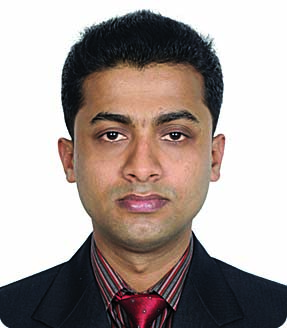Covid comes as a double blow to people with HIV

More than 80 percent of women living with HIV in the Asia Pacific Region have reported that they lacked access to sexual and reproductive health and rights services (SRHR), including contraception, during Covid-19 lockdowns.
Proportion of young key populations in Asia Pacific who experienced delays or disruptions when accessing health services were: condoms 27%; pre-exposure prophylaxis (PrEP) 14%; HIV testing 26%; psychological support 30%; and mental health medication 19%.
Eamonn Murphy, Regional Director, UNAIDS Asia and the Pacific, presented this at the 12th session of the 10th Asia Pacific Conference on Reproductive and Sexual Health and Rights (APCRSHR10) being held virtually. The APCRSHR10 Secretariat, and Reproductive Health Association of Cambodia (RHAC) and CNS are co-hosting the online sessions.
People living with HIV/AIDS face stigma and discriminaiton in the countries of the Asia and the Pacific region. The pandemic comes as a double blow to them as all the health facilities are busy with the management of Covid-19 patients.
Murphy said a country level survey of PLHIV found that 37% could not access contraception services; 22% were unable to obtain condoms; some could not access medication for opportunistic infections.
According to a survey on key populations 19% respondents do not have information on condom and lubricant; 35% do not have information on diagnosis and treatment of STIs; 53% do not have information on PrEP; 50% lack information on psychosocial support.
He said new HIV infection and AIDS-related death trends vary greatly in Asia and the Pacific countries. Percentage change in new HIV infections 2010-2019 for the overall region was -12%. But there were wide variations between countries with the change being 207% in Philippines and -81% in Singapore. Twelve countries showed a decline and seven showed an increase.
Percentage change in AIDS-related deaths was overall -29% in the region. But it varied from 405% in Pakistan followed by the Philippines at over 300% to -66% in India.
In 2019, 98% of new HIV infections were among key populations and their partners (MSM 44%, clients of sex workers and partners of key populations 21%; people who inject drugs 17%, sex workers 9%; transgender 7%, rest of the popn 2%). In the 15-24 years age group corresponding figures were 52%; 19%; 10%; 10%; and 1% respectively. Overall 99% of the new infections in this age group were in key populations and their partners.
Innovative projects of Papua New Guinea
Angela Kelly Hanku, Head of SRH at the Papua New Guinea Institute of Medical Research and Agnes Mek, Head of social and behavioural research in the SRH Unit, Papua New Guinea Institute of Medical Research, said they run two visual method projects with young women living with HIV in the country.
In 2014, UNAIDS and UNICEF launched a global campaign to end adolescent AIDS-related deaths by 2030. Because there is little to no knowledge about the experiences of young women with HIV in Papua New Guinea, a visual methods project involving Photovoice and a series of documentary films offered an innovative, empowering and creative means of bringing these young women together to explore issues about HIV.
The project involved 9 young women and girls. Most of them were never connected with another woman or girl with HIV. Out of these, three were mentor women.
Six young women were given cameras and asked to capture photos that detail living with HIV in PNG, particularly in relation to treatment, families and their future.
The three older women who were diagnosed with HIV as young women acted as mentors and participated in the Photovoice workshop. A selection of photographs was then used to facilitate group discussions. Participating women chose an image each and a story written or narrated to go with the chosen image. 9 images and their accompanying stories were produced. In addition to the workshop, 3 short documentary films featuring young women with HIV were produced.
After first becoming infected and later diagnosed with HIV, these young women and girls depicted distinct and varied journeys of family, living arrangements, love and support, sexual relationships, acceptance, education and adherence to treatment.
“Positioned somewhat differently in each of these stories was the role of treatment. Through treatment, each of these women and girls has been able to achieve personally profound milestones: an HIV-negative baby; getting married; completing their education; staying healthy; returning to treatment and remaining adherent.”





